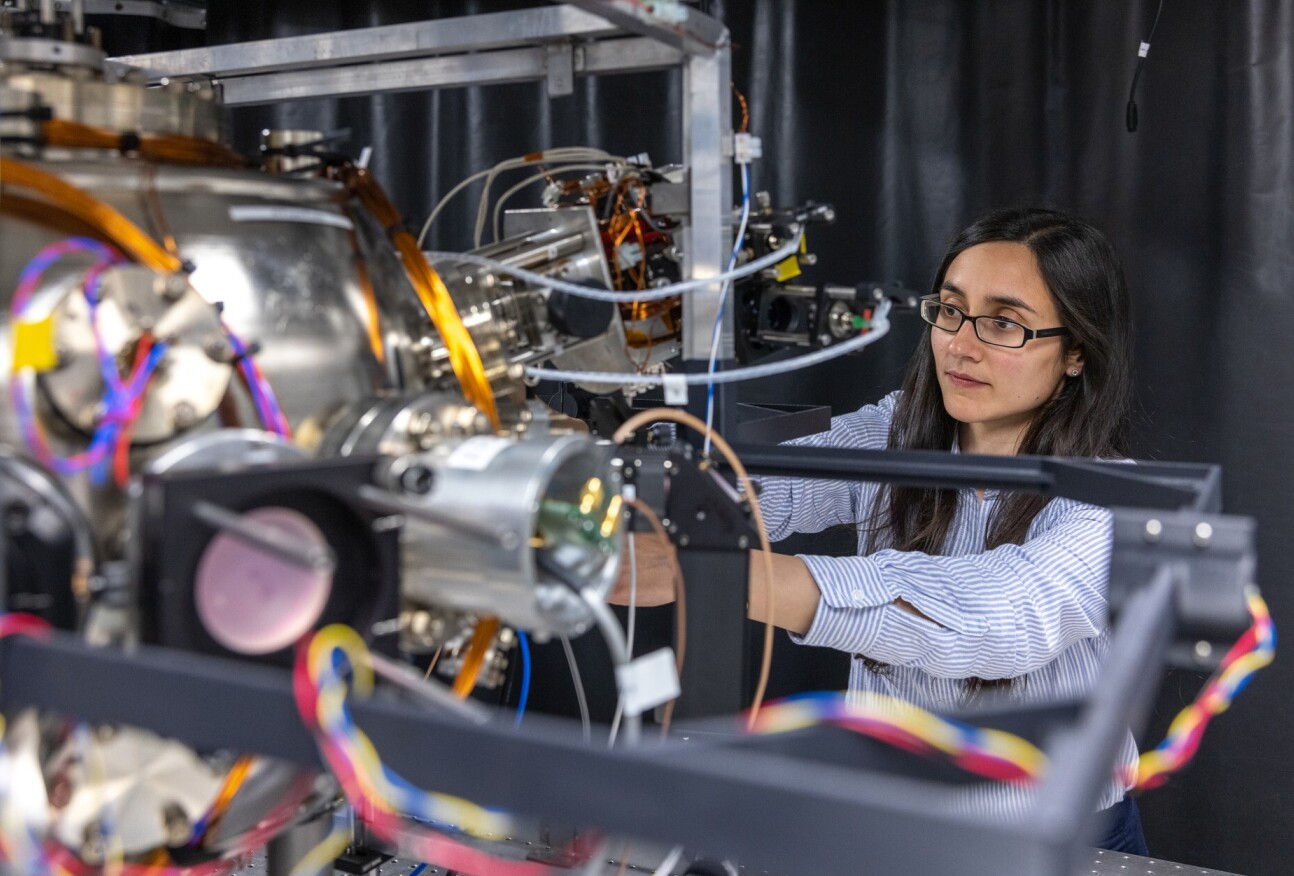Quantum hubs and R&D ecosystem: News from Imperial


Here’s a batch of fresh news and announcements from across Imperial.
From Imperial researchers collaborating on a new set of Quantum Hubs, to how universities play a crucial role in the UK’s research and development ecosystem, here is some quick-read news from across Imperial.
Quantum funding boost

In partnership with businesses, the Hubs aim to develop practical uses of quantum technology that will directly impact people's lives, in areas including healthcare, security, and clean energy.
Imperial quantum researchers will collaborate with three of the Hubs:
- The UK Quantum Technology Hub in Sensing, Imaging and Timing (QuSIT - led by the University of Birmingham) focuses on the development of quantum sensing for practical applications. Imperial researchers have created quantum technologies for cancer diagnostics, optical data communications and data storage.
- The UK Hub for Quantum Enabled Position, Navigation and Timing (QePNT - led by the University of Glasgow) creates quantum-based positioning and navigation systems. Imperial researchers have developed technologies for GPS-free navigation and satellite-based systems.
- The Hub for Quantum Computing via Integrated and Interconnected Implementations (QCI3 - led by the University of Oxford) develops technologies for building quantum computers. Imperial researchers have experience in this area ranging from fundamental research and applications to spinout companies and security and defence.
Find out more about Imperial’s quantum connections from the Centre for Quantum Engineering, Science and Technology (QuEST).
R&D ecosystem
The WellHome study, led by our Environmental Research Group, was celebrated in a report by CaSE (Campaign for Science and Engineering) for developing research that directly benefits local communities.
The project aims to identify air pollution exposures across both indoor and outdoor environments and understand the continuum between indoor and outdoor pollution within vulnerable and diverse urban communities. It also aims to identify behavioural changes that can reduce this exposure and improve health outcomes.
Co-designed with the local community in White City, Imperial’s researchers have taken an innovative approach to raising awareness and understanding of air pollution through educational sessions, workshops, panel discussions and interactive science activities.
Read the full report on the value of universities to the UK’s R&D ecosystem on CaSE’s website.
Italian honour
Founded in 1690, the Academy is one of the oldest scientific academies in the world and is closely associated with the University of Bologna. Among its members were scientists Daniel Bernoulli, Mikhail Lomonosov, Luigi Galvani, Dmitri Mendeleev, Marie Curie, Guglielmo Marconi and Albert Einstein.
Professor Sternberg is Director of the Centre for Integrative Systems Biology and Bioinformatics (CISBIO). His analyses of protein structures uncovered key principles, and he developed widely used resources like the Phyre web server, software for protein docking, and 3D-LigandSite for ligand binding prediction. These user-friendly tools have been crucial for researchers worldwide, including COVID-19-related studies.
AI assistant evaluates post-surgery patients
The AI-powered agent, called ‘Dora’, phoned patients autonomously and, via a series of questions, determined if they are recovering well or need further medical assessment. The study found that decisions that were made independently by Dora about the patient’s recovery agreed strongly with those of supervising clinicians.
The study involved more than 200 patients who had recently undergone cataract surgery, the most common NHS operation. It was conducted by the researchers at Oxford University Hospitals (OUH) NHS Foundation Trust and Imperial College Healthcare NHS Trust and funded by a National Institute for Health and Care Research (NIHR) Artificial Intelligence in Health and Care Award.
Dr Eduardo Normando, a consultant ophthalmologist and senior lecturer at Imperial, said: “This approach can significantly enhance patient care by providing timely and efficient check-ups. It increases appointment capacity and ensures patients receive consistent and convenient follow-up. It could reduce the need for in-person consultations and ease the burden on healthcare facilities.”
Read the full paper in eClinical Medicine.
Article text (excluding photos or graphics) © Imperial College London.
Photos and graphics subject to third party copyright used with permission or © Imperial College London.